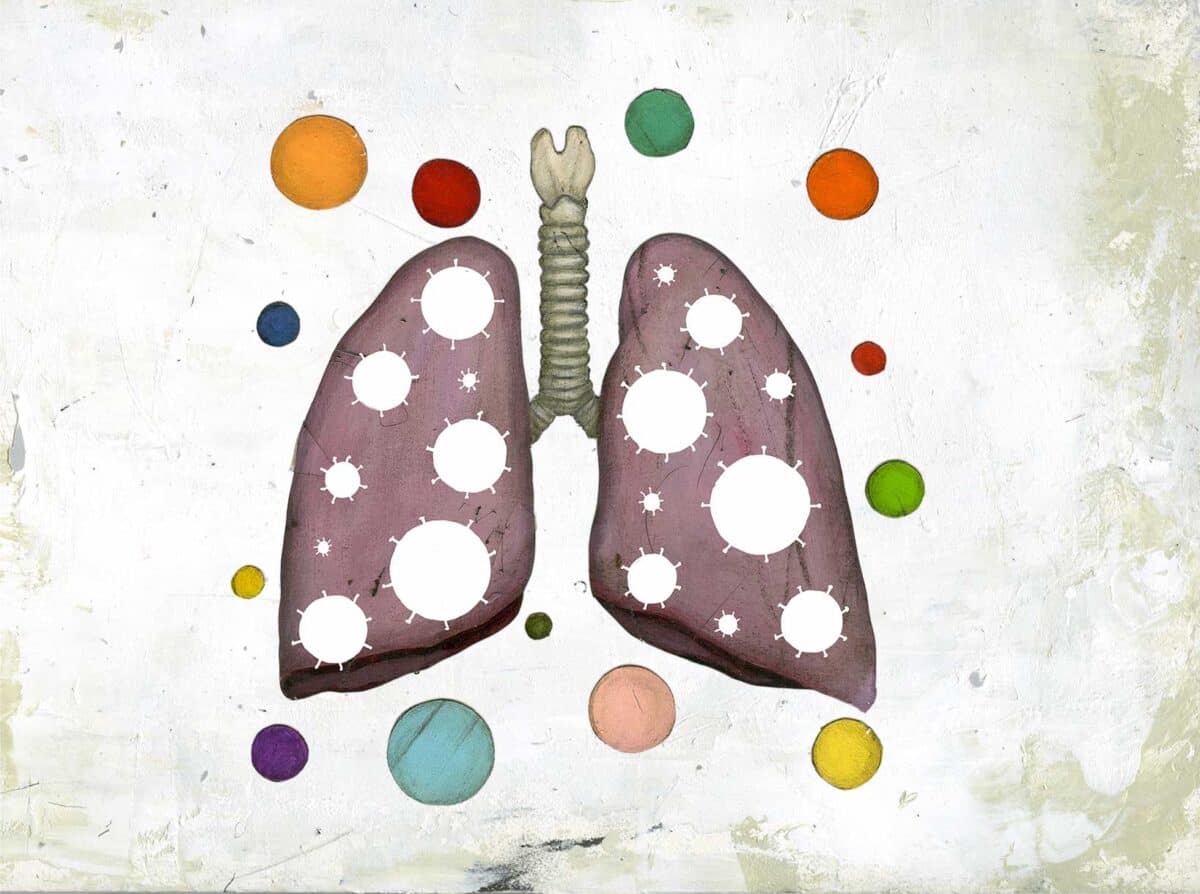Published On November 20, 2021
Organoids—cells coaxed to grow into tiny, three-dimensional tissues—have changed the face of basic science. Because they possess key qualities of human organs in miniature, “organoids opened the door to deep analysis of human tissue in a laboratory setting, in a way once possible only with animal models,” says Christina Faherty, a molecular biologist at Massachusetts General Hospital.
Advances in the field have led to even more ingenuity. At MGH, for instance, Faherty and colleagues are studying the Shigella bacterium and how it infects the human intestine. They grew an organoid that included a variety of intestinal cells, including some that produce mucus and others that “sniff” for bacterial intruders. Then they splayed those across a membrane to test how different strains of Shigella infect each cell type.
The model led to new findings on a disease that infects 165 million people per year and kills more than 600,000. “We’ve never before had such a versatile prototype for human disease,” Faherty says. Organoid researchers across the globe have moved to do the same for hundreds of other conditions.











BACTERIAL INFECTIONFaherty Lab, Massachusetts General HospitalShigella infect half a million Americans each year, and antibiotic-resistant strains are on the rise. These organoids capture the nuances of intestinal tissue to provide authentic models for Shigella infection, complete with mucus production.
SNAKE BITESClevers Lab, University Medical Center Utrecht, the NetherlandsTomorrow’s antivenoms and venom-based drugs may owe their existence to today’s venom gland organoids. Snake venom gland organoids have recently arrived, and a biobank of organoids from other venomous animals is on the way.
DRUG TOXICITYLittle Lab, Royal Children’s Hospital Melbourne, AustraliaThree-dimensional bioprinting has recently given rise to a kidney organoid with mature nephrons—the tiny basic unit of the kidney, which contains 26 different interacting cell types. Such a model could be used to test the toxicity of new drugs and treatments.
TUMORSDavid Jones Lab, Memorial Sloan
Kettering Cancer Center, New YorkPatients suffering from many cancer types have had their tumors biopsied then replicated as organoids. Increased savvy in using this technology may soon allow physicians to test and tailor treatments to their patients.
DRY EYESClevers Lab, University Medical Center Utrecht, the NetherlandsDry eye disorders are hard to study without looking at tear production up close. Tear duct organoids can be coaxed into crying—swelling without producing tears—in the lab. Such organoids may also pave the way for tear duct transplants.
SKIN DISEASESKoehler Lab, Boston Children’s HospitalScientists have been growing skin in the lab for decades, but recent organoids include skin tissue with fat, nerves and hair. These could eventually help test how drugs interact with human skin, and may lead to advances in treating severe burns.
SEIZURESNovitch Lab, University of California, Los AngelesThe newest brain organoids have neurons that network, producing coordinated waves of electrical activity. In one study, researchers tracked electrical pulses resembling seizures. The tissue was grown from patients with Rett syndrome, which is characterized by such events.
COVID-19Blish Lab, Stanford UniversityPalo Alto, CaliforniaOrganoids were key in demonstrating that lung cells begin dying en masse only three days after severe COVID-19 infection. They have also shown that the virus targets not only alveoli—tiny air sacs in the lung—but also club cells, which line the tissue leading to the air sacs.
CONGENITAL EYE DISORDERSLittle Lab, Royal Children’s Hospital Melbourne, AustraliaThe optic cup organoid—which has both brain and eye tissues—has allowed scientists to observe precisely how retinas, lenses and corneas develop in human embryos, a crucial step in studying birth defects and congenital eye disorders.
TASTE TROUBLESJiang Lab, Monell Chemical Senses Center, PhiladelphiaOrganoids have been coaxed to develop taste buds that detect salty, sour, sweet, bitter and umami flavors. Studies of these organoids have shed light on the genes and signaling pathways involved in taste receptor cell differentiation and proliferation.
HEART ATTACKSMendjan Lab, Austrian Academy of Sciences, ViennaScientists recently developed the first human heart organoids, smaller than sesame seeds and complete with beating chambers. Designed to function like the hearts of month-old embryos, these organoids may increase our understanding of congenital heart defects and heart attacks.
Stay on the frontiers of medicine